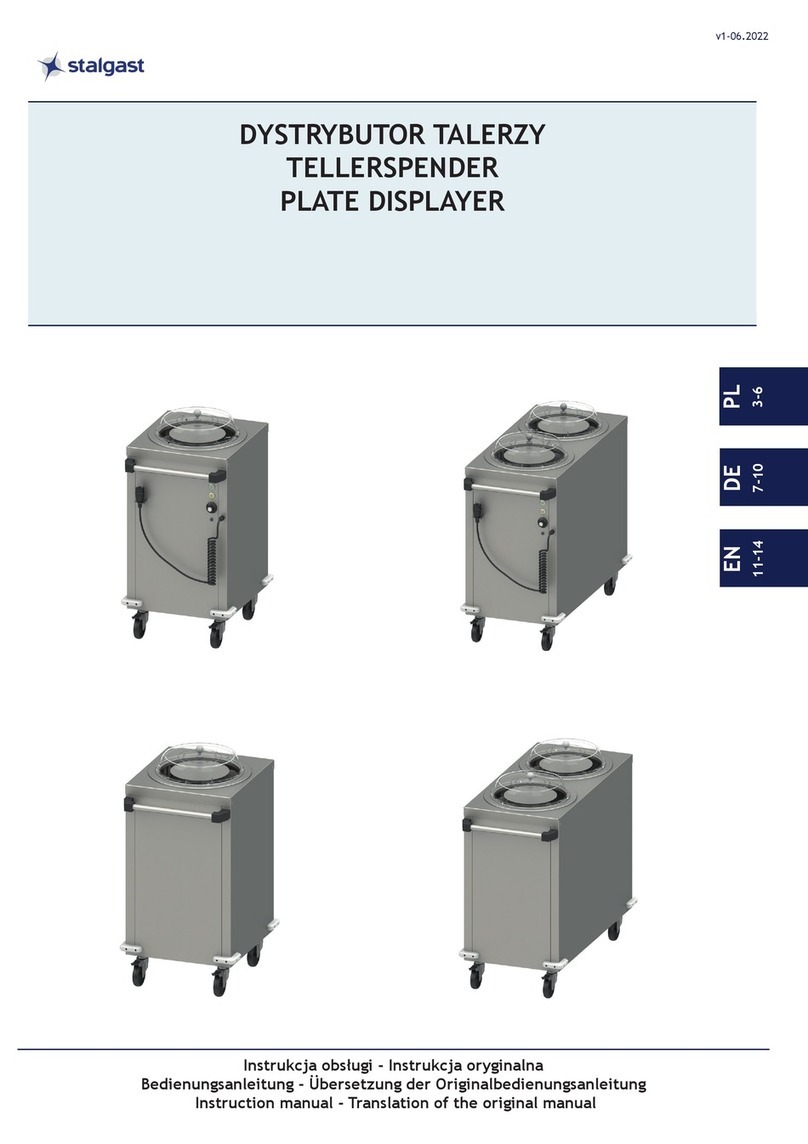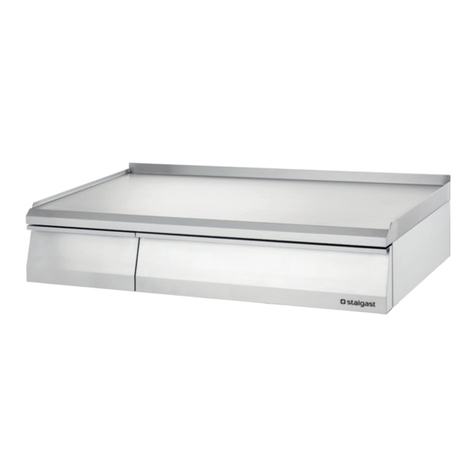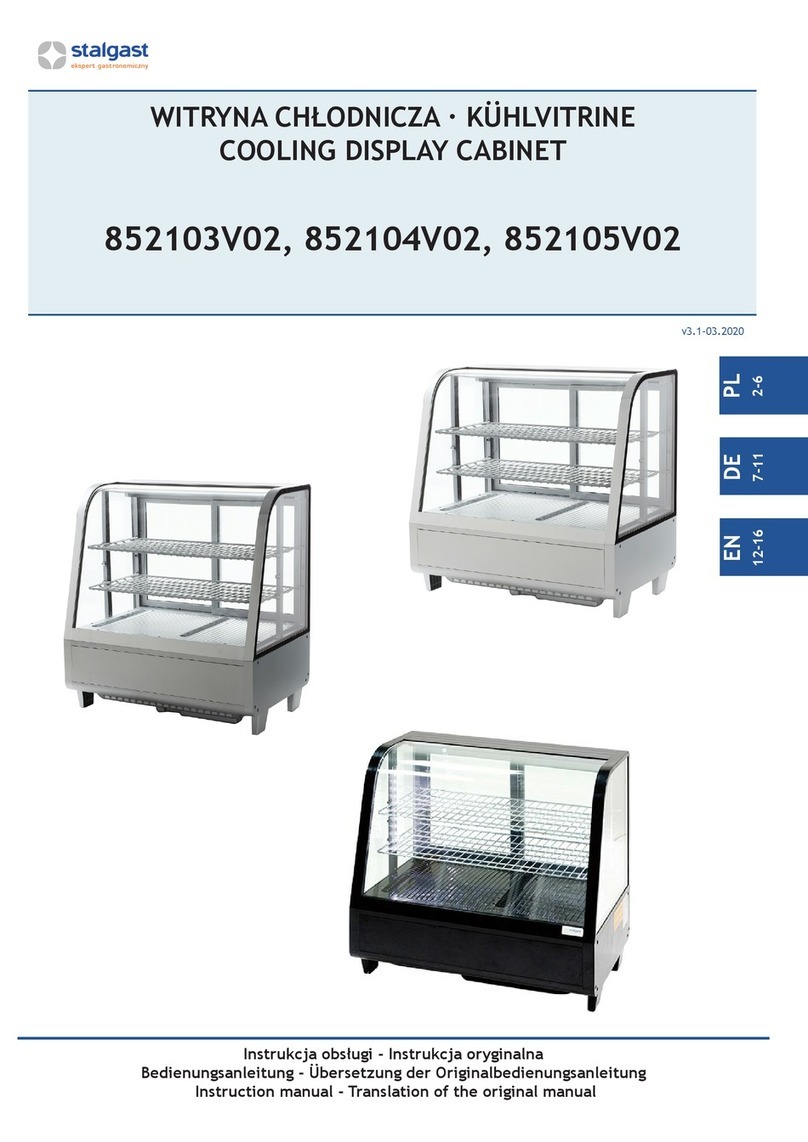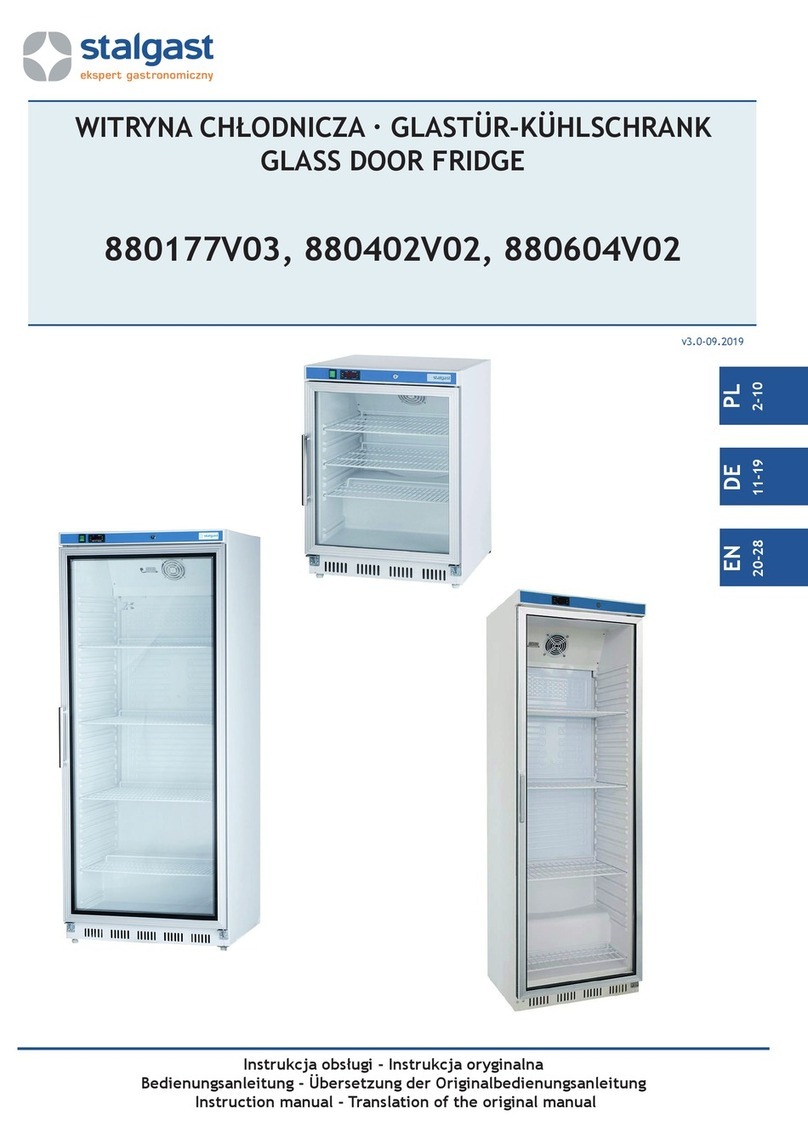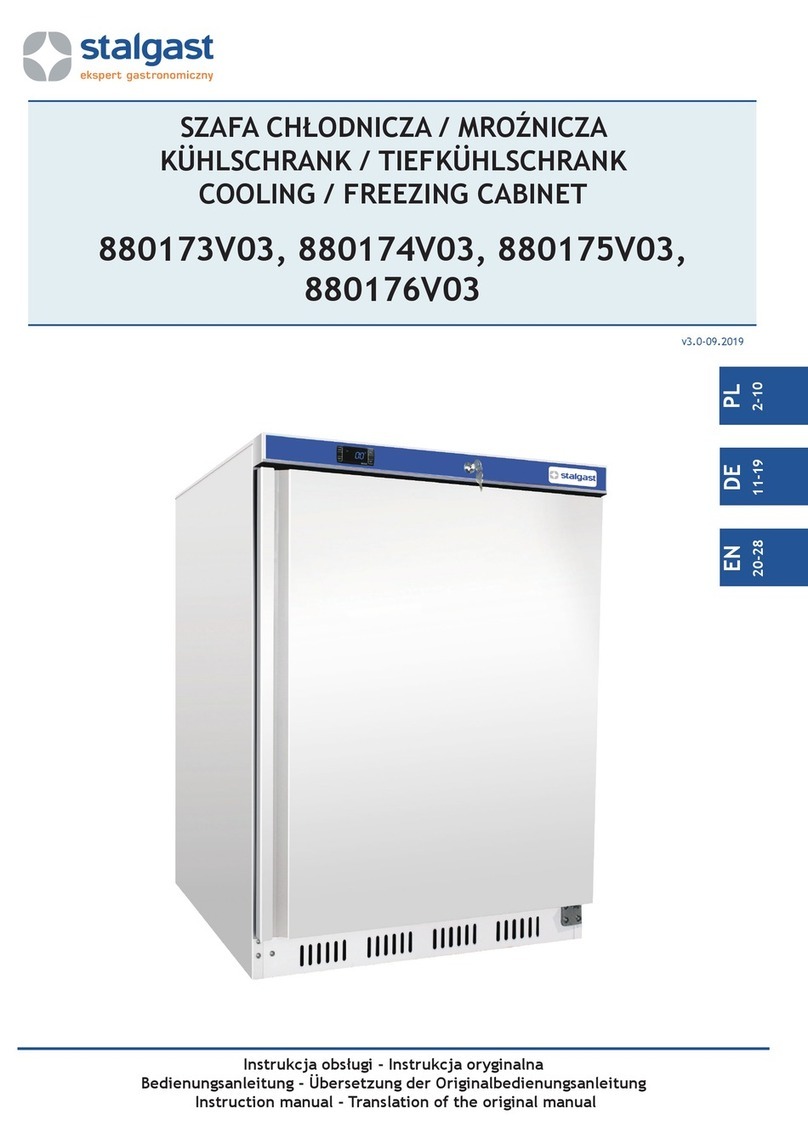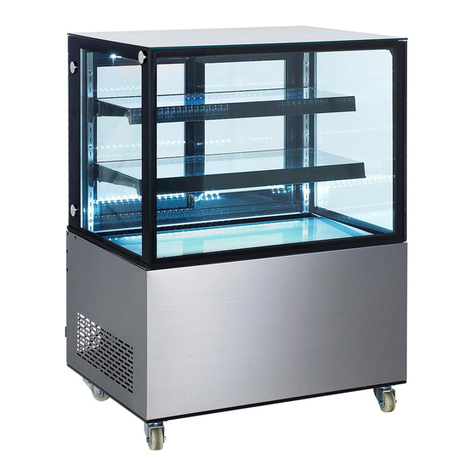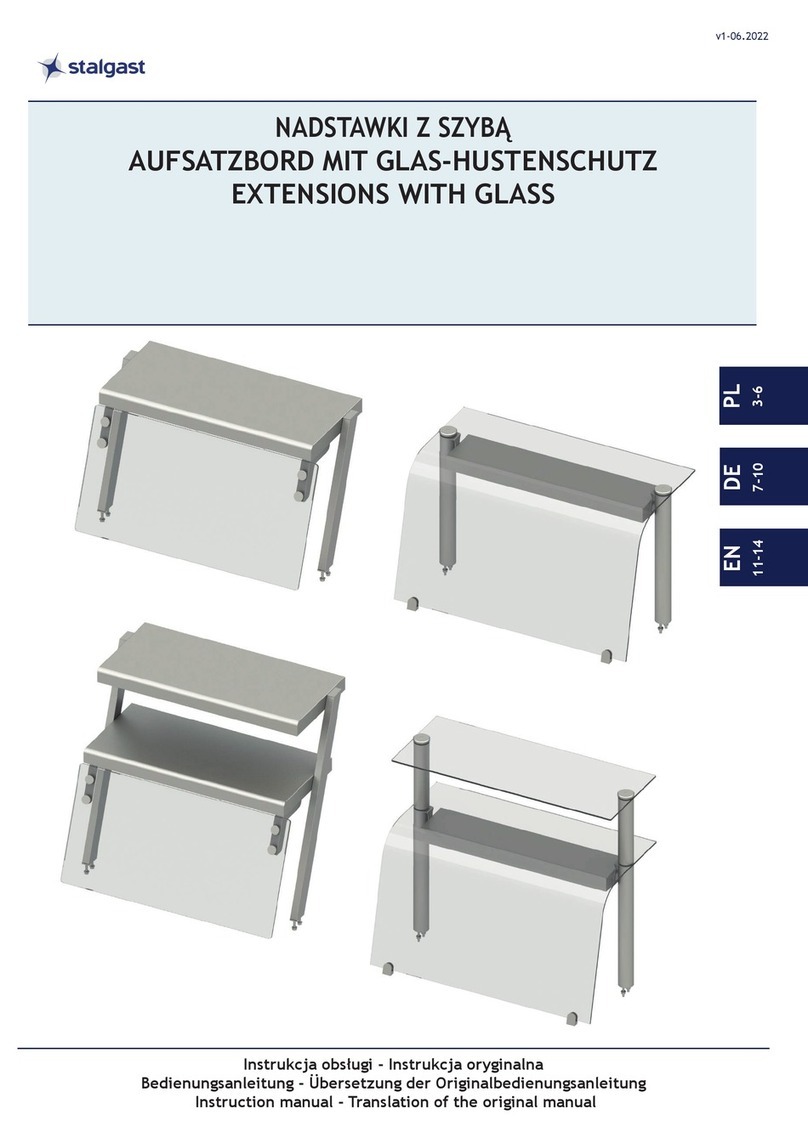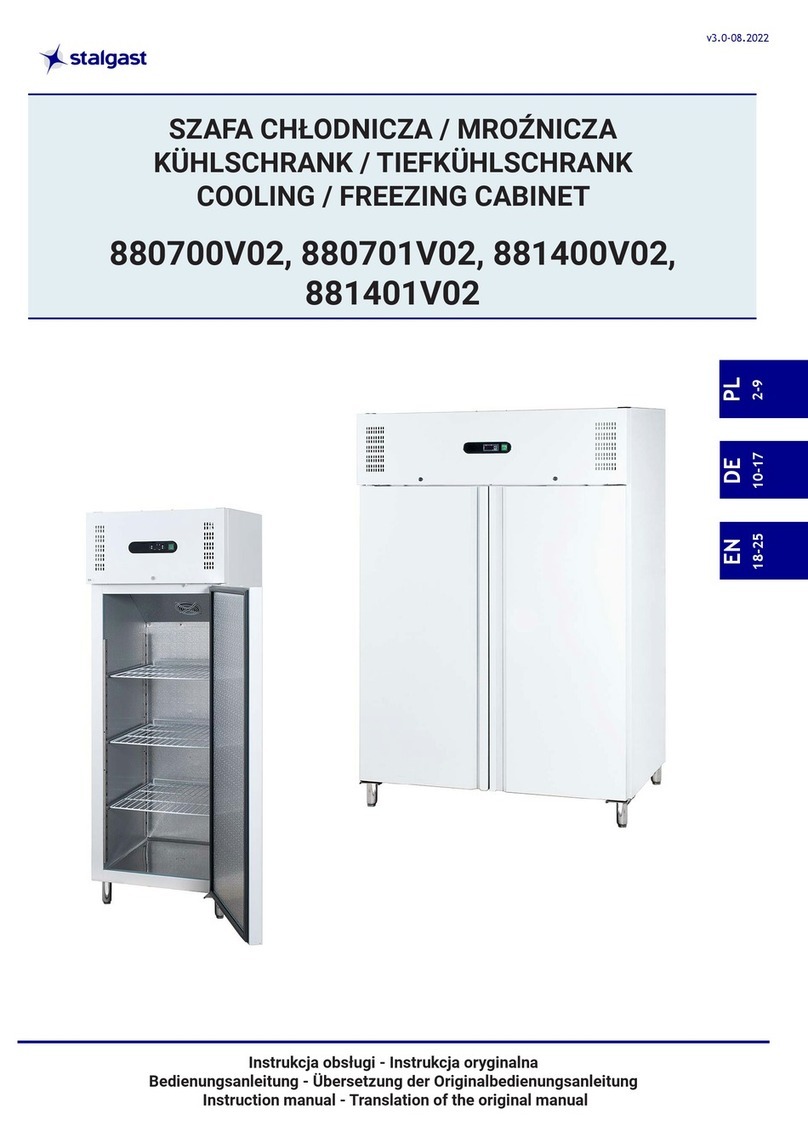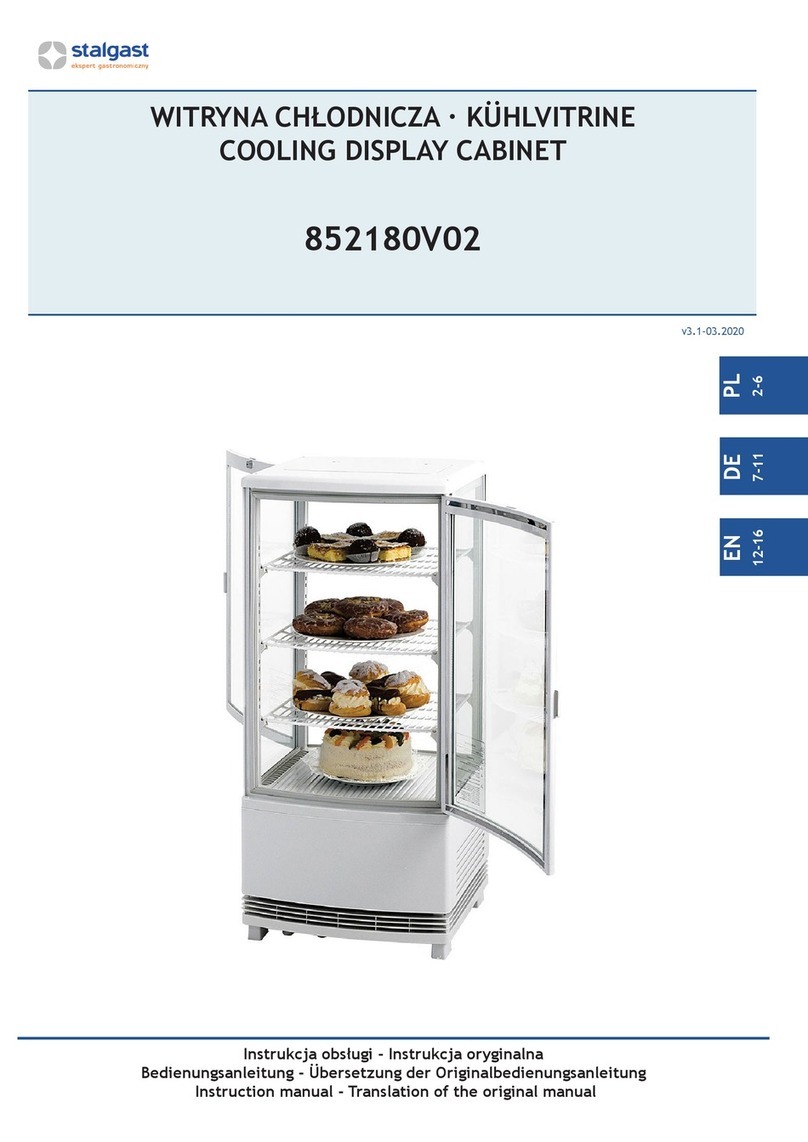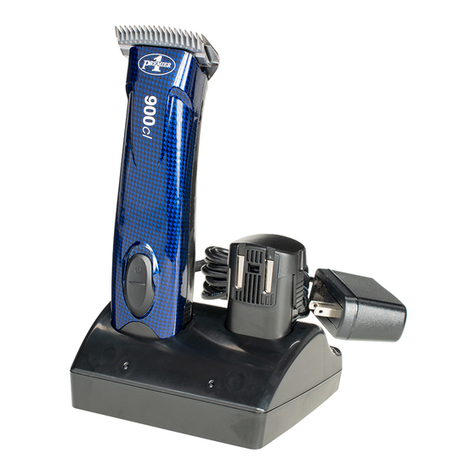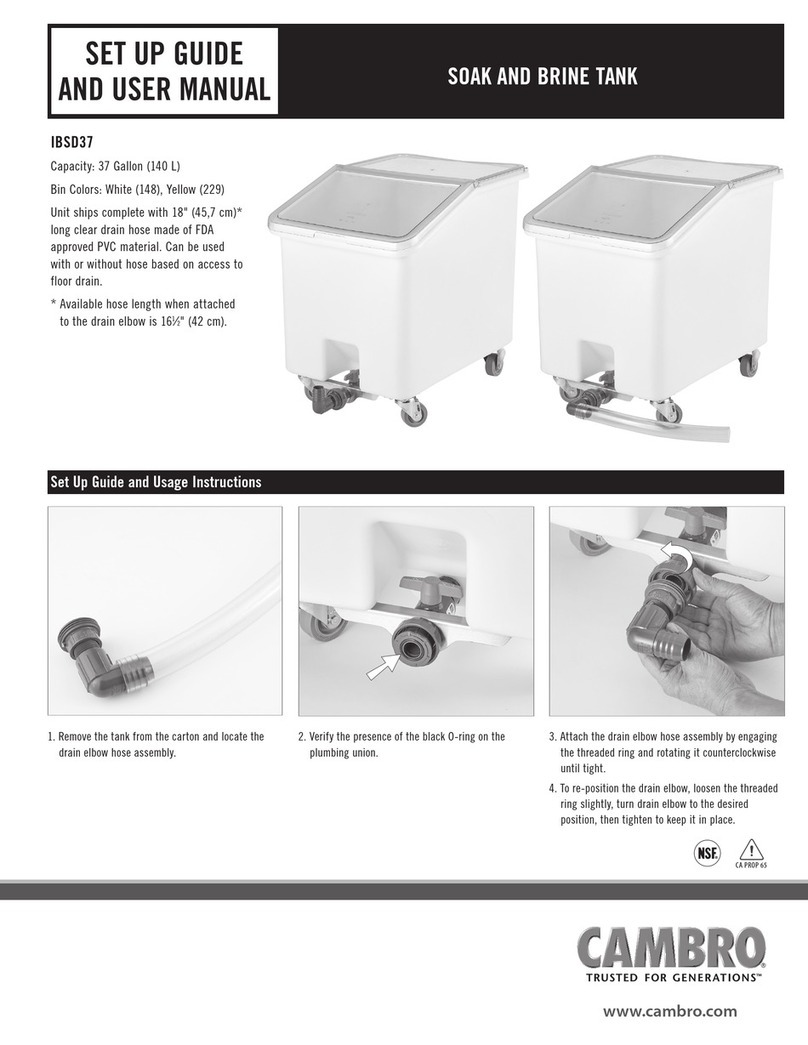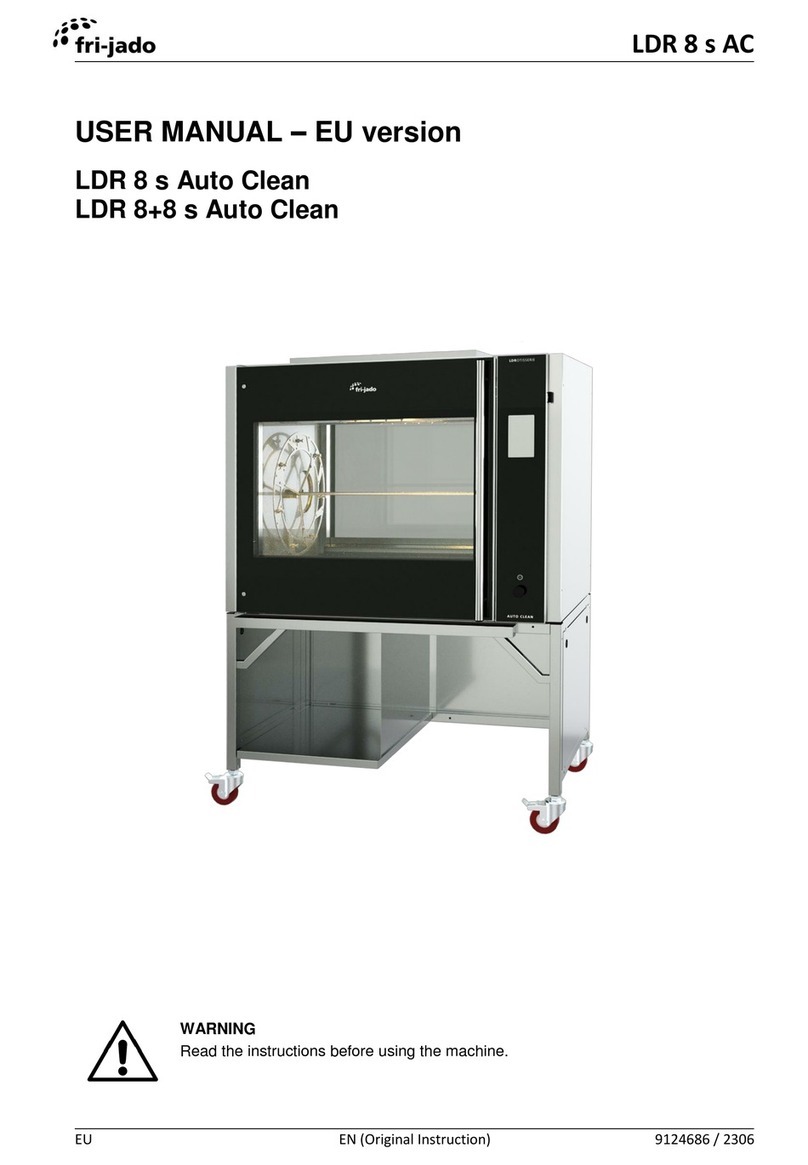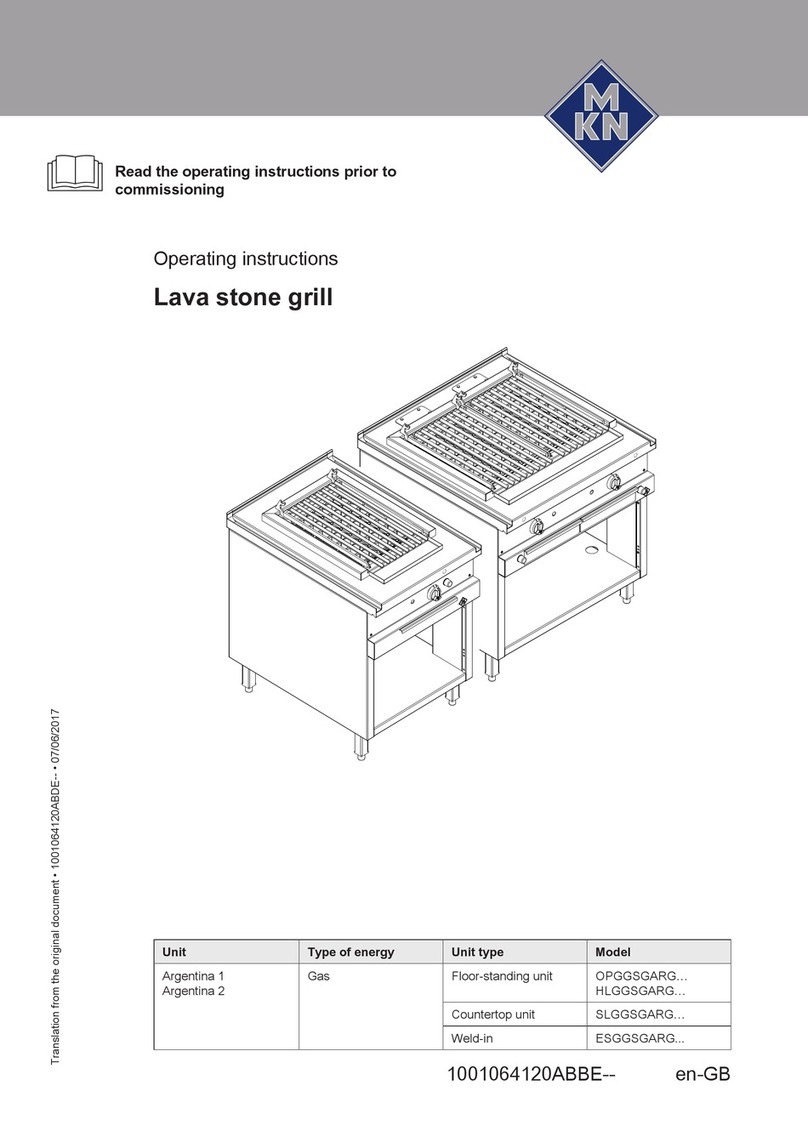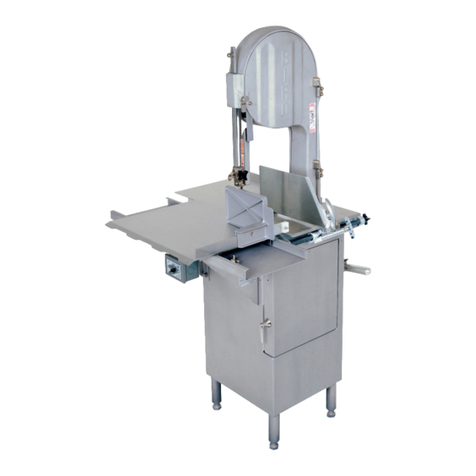
- 2 -
PL
Dziękujemy Państwu za zakup naszego produktu. Przed pierwszym użyciem prosimy dokładnie zapoznać się z niniejszą instrukcją
obsługi.
Aby zapewnić Państwu najlepsze rozwiązania techniczne urządzeń, stale rozwijamy je technologicznie. Z tego względu zdjęcia i
rysunki w poniższej instrukcji mogą różnić się od zakupionego urządzenia. Instrukcja obsługi każdego urządzenia zawierają-
ca aktualne zdjęcia i rysunki, dostępna jest na stronie internetowej www.stalgast.com w zakładce „pliki do pobrania”
przy opisie produktu.
UWAGA: Instrukcję należy przechowywać w bezpiecznym oraz dostępnym dla personelu miejscu. Producent zastrzega sobie
prawo do zmiany parametrów technicznych urządzeń. Kopiowanie instrukcji bez zgody producenta jest zabronione.
1. INSTRUKCJE BEZPIECZEŃSTWA
•Nieprawidłowa obsługa i niewłaściwe użytkowanie może spowodować poważne uszkodzenie urządzenia lub zranienie osób.
•Urządzenie może być stosowane wyłącznie w celu, do którego zostało zaprojektowane.
•Producent nie ponosi żadnej odpowiedzialności za szkody spowodowane nieprawidłową obsługą i niewłaściwym użytkowa-
niem urządzenia.
•W czasie użytkowania zabezpiecz urządzenie i wtyczkę kabla zasilającego przed kontaktem z wodą lub innymi płynami. W
przypadku, gdyby przez nieuwagę urządzenie wpadło do wody, należy natychmiast wyciągnąć wtyczkę z kontaktu, a następnie
zlecić kontrolę urządzenia specjaliście.
Nieprzestrzeganie tej instrukcji może spowodować zagrożenie życia.
•Nigdy nie otwieraj samodzielnie obudowy urządzenia.
•Nie wtykaj żadnych przedmiotów w obudowę urządzenia.
•Nie dotykaj wtyczki kabla zasilającego wilgotnymi rękami.
•Regularnie kontroluj stan wtyczki i kabla. W przypadku wykrycia uszkodzenia wtyczki lub kabla, zleć naprawę w wyspecjalizo-
wanym punkcie naprawczym.
•W przypadku, gdy urządzenie spadnie lub ulegnie uszkodzeniu w inny sposób, przed dalszym użytkowaniem zawsze zleć prze-
prowadzenie kontroli i ewentualną naprawę w wyspecjalizowanym punkcie naprawczym.
•Nigdy nie naprawiaj urządzenia samodzielnie - może to spowodować zagrożenie życia.
•Chroń kabel zasilający przed kontaktem z ostrymi lub gorącymi przedmiotami i chroń go z dala od otwartego ognia. Jeżeli
chcesz odłączyć urządzenie z kontaktu, zawsze chwytaj za wtyczkę, nigdy nie ciągnij za kabel.
•Zabezpiecz kabel (lub przedłużacz), aby nikt przez omyłkę nie wyciągnął go z kontaktu lub się o niego nie potknął.
•Kontroluj funkcjonowanie urządzenia w czasie użytkowania.
•Niniejszy sprzęt może być użytkowany przez dzieci w wieku co najmniej 8 lat i przez osoby o obniżonych możliwościach
zycznych, umysłowych i osoby o braku doświadczenia i znajomości sprzętu, jeżeli zapewniony zostanie nadzór lub instruktaż
odnośnie do użytkowania sprzętu w bezpieczny sposób, tak aby związane z tym zagrożenia były zrozumiałe. Dzieci nie powin-
ny bawić się sprzętem. Dzieci bez nadzoru nie powinny wykonywać czyszczenia i konserwacji sprzętu.
•Jeżeli urządzenie nie jest w danej chwili użytkowane lub jest właśnie czyszczone, zawsze odłącz je od źródła zasilania, wycią-
gając wtyczkę z kontaktu. Odłączona wtyczka powinna być umieszczona w widocznym miejscu.
•Uwaga : Jeżeli wtyczka kabla zasilającego jest podłączona do kontaktu, urządzenie cały czas pozostaje pod napięciem.
•Wyłącz urządzenie, zanim wyciągniesz wtyczkę z kontaktu.
•Nigdy nie ciągnij urządzenia za kabel zasilający.
•W urządzeniu zabronione jest przechowywanie substancji wybuchowych takich jak puszki z aerozolem / gazem palnym.
• OSTRZEŻENIE: Nie zasłaniać otworów wentylacyjnych w obudowie sprzętu lub we wbudowanej konstrukcji.
• OSTRZEŻENIE: W celu przyspieszenia procesu rozmrażania nie posługiwać się środkami mechanicznymi ani innymi środka-
mi niż zalecane przez wytwórcę.
• OSTRZEŻENIE: Chronić przed uszkodzeniem układ chłodniczy.
• OSTRZEŻENIE: Wewnątrz komory do przechowywania żywności nie używać sprzętu elektrycznego innego typu niż zale-
cane przez wytwórcę.
2. WIADOMOŚCI OGÓLNE
•Urządzenie należy ustawić na płaskiej, stabilnej i niepalnej powierzchni.
•Witryny nie należy instalować w pobliżu źródeł ciepła takich jak grzejniki, piece, piekarniki itp.. Instalacja w takim miejscu
spowoduje częstsze włączanie sprężarki, wpływające niekorzystnie na żywotność urządzenia oraz wzrost zużycia energii elek-
trycznej, jeżeli nie da się uniknąć instalacji w takim miejscu, należy zastosować dodatkową izolację termiczną.
•Należy pamiętać aby otwory wentylacyjne nie były zasłonięte.
•Urządzenie należy podłączać do sieci elektrycznej o napięciu znamionowym 230V i częstotliwości wynoszącej 50Hz.
•Przed przystąpieniem do czyszczenia urządzenia należy bezwzględnie odłączyć je od sieci elektrycznej.
•Witryna chłodnicza służy do przechowywania schłodzonych produktów spożywczych.
•Urządzenie posiada szeroki zakres zastosowania w sklepie ,domu jak i sali konferencyjnej.
